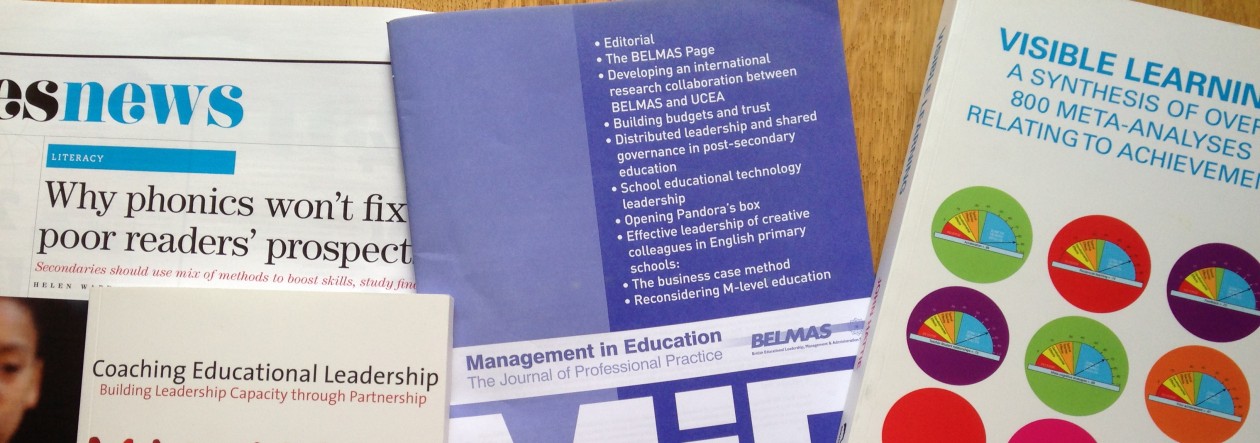There are five years worth of teachers that have never worked with National Curriculum levels, so having this information is good. It puts where we are now into context. The document is here.
As usual, we suggest you look at the parts of the document that apply to you.
The removal of levels was hoped to
- provide the chance for increasing pupil motivation and engagement
- make better use of formative assessment in the classroom
- reduce the time spent by teachers in recording and tracking
- release time for more in-depth teaching and formative assessment
Whether or not that has been the case in your school will depend on how its leaders have approached things.
Case studies tend to be the best evidence (as long as they haven’t been chosen to make a specific point whilst disregarding any alternative evidence). With this is mind, have a look at the blue boxes for examples. Here are some extracts-
p19: Example 1: one school’s response to AWL
A secondary academy developed its own bespoke assessment system which has subsequently been adopted by other schools in the MAT. The approach is underpinned by the school’s belief that assessment should be driven by curriculum design. Curriculum
leads began by devising key performance indicators (KPIs) based on their curriculum and what they expected students to achieve by the end of year 11 (in their GCSEs). They then worked backwards to identify what needed to be achieved at different points along
the way. The curriculum and KPIs focus on 3 key skill areas – knowledge, understanding and literacy. Teachers devised their own summative tests to ensure that they related to the school’s curriculum. A teacher explained how this prioritised high-quality teaching:
‘It’s made us write the Scheme of Work first and think about the learning and the assessment comes afterwards. Whereas before [we] would have written all the assessments and then written the Scheme of Work around the assessment.’
p20: A senior leader said that the staff were pleased to remove levels, because they considered them to be ‘meaningless’. Now the focus has moved towards students learning the curriculum content and meeting individual targets, with assessment being used to monitor and support this.
Example 5 p42: improved communication with parents
Staff at this large maintained primary school had found it challenging to engage parents in their child’s education. Prior to the removal of levels, staff identified a need to work with parents to explain the upcoming changes and the details of their new approach. They wrote to parents using plain language to describe their new assessment model.
Parents receive reports called ‘progress maps’ 3 times a year in the autumn, spring and summer terms. The system uses emoji faces to summarise each student’s attainment and progress in core subjects. The progress maps also include individual targets for each
subject and tips on how parents can support their children’s education outside of school.
Describing their approach, a year 4 teacher explained ‘Our reporting starts off on the basis of ‘is your child at, above or below expected’. Parents understand this clearly. If the children are below, we still frame it in a positive way and explain [that] ‘your child is below
the expected at the moment, so we’re doing this, this and this to help your child’.’
Parents are also invited into school for face-to-face progress meetings so that teachers can explain anything parents do not understand in the progress reports. In order to encourage parents to attend, the school offers whole-day informal ‘drop-ins’ to provide
increased flexibility. Staff report that these sessions have increased parental engagement – attendance at the ‘drop-ins’ has been good, with an average of 20 parents attending from a class of 30 pupils.
SEND implications? p27
Only a minority of interviewees felt that their school’s assessment approach worked well for pupils with SEN. Others said that their school’s approach did not adequately recognise the small steps of progress made by pupils with SEN. This concern was typically, but not exclusively, mentioned by interviewees from primary
schools.
The workload issue? p27
Most interviewees reported that teachers were now spending a similar amount of time on assessment as before. A few reported a continuing increase in workload due to the requirements of their school’s new approach.










You must be logged in to post a comment.